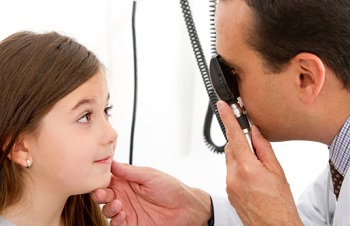
A Hadassah team of specialists led by Dr. Irene Anteby, the Director of Pediatric Ophthalmology at Hadassah Medical Center, is reaching out to the community to offer information about preventing and treating Amblyopia, the common eye disorder which results in developing abnormal vision in infancy, affecting thousands of children.
Amblyopia is the leading cause of visual loss in one eye in young children. Nearly 4 % of children are affected by this eye disorder characterized by blurred vision in either one eye or both eyes. The phenomenon is not innate, but appears after the brain receives abnormal visual stimuli during the first years of life.
Depending on the quality of the image obtained by the brain, the vision of a child born with a normal ocular structure (and brain) will develop over the years. Normally by the end of the process optimum visual acuity is achieved. If visual stimuli received by the child are unclear, distorted or scrambled, the phenomenon of “lazy eye” can occur.
Some of the causes of Amblyopia are: a drooping eyelid that obscures the visual axis; an opaque film on the lens of the eye (cataract); focusing difference between the two eyes (e.g. one will be nearsighted and the other farsighted); or strabismus (both eyes do not focus on the same object at the same time due to the lack of parallelism of the visual axes). All of these can disturb sensory and motor correspondence in both eyes.
Visual development will be hampered when the eyes see a blurred image or are blurred over a long period, gradually becoming “lazy”. The problem is found in the brain, as the brain ceases to “take into account” the eye producing a blurred vision, affecting vision. Thus during the critical period of visual development, the brain’s perception of vision does not occur properly for one eye or both!
The critical period in visual development extends from birth to ten years. The younger the child is, the more important it is that his/her vision is properly stimulated. The earlier the diagnosis of amblyopia occurs, the greater the chances of treating the phenomenon in depth and allowing the child to gain normal vision.
Diagnosis, Prevention and Treatment
It is often difficult to make the initial diagnosis because children generally do not complain. They learn to ignore the visually impaired eye and “adapt” to their condition. In many cases, parents are not even aware of the problem. The earlier diagnosis of Amblyopia occurs, the greater the chances of successful treatment.
The treatment of Amblyopia begins with screening for its cause. At first, the treatment stimulates vision through various means, such as glasses or corrective surgery. Then, by “weakening” the healthy eye with drops which blur vision or a patch over the strong eye, we “force” the brain to take the lazy eye into account and the eye is forced to try harder. As a result, the brain learns to receive an enhanced image. This very effective treatment can last from several months to several years.
Prevention of amblyopia is of paramount importance. Examinations provided by the Jerusalem Municipality and “Hadassah Service to Children” are the best way to prevent its occurrence.
Hadassah recommends that parents seek the help of a specialist in pediatric ophthalmology when they notice the following symptoms:
• A baby who does not follow the parents eyes and / or visual disturbances show as a lack of concentration • A child who seems to be squinting with eyes ” fleeing ” to the outside or inside • Abnormal eye movements • A child with fine motor difficulties • A child who gets too close to the television, or any written material • A child who often rubs its eyes • A child who closes one eye or both eyes when facing the sun • A child with hyperactive tendencies who is unable to sit still or focus– sometimes the problem turns out to be ocular in origin • A child who comes from a family suffering from eye disease
